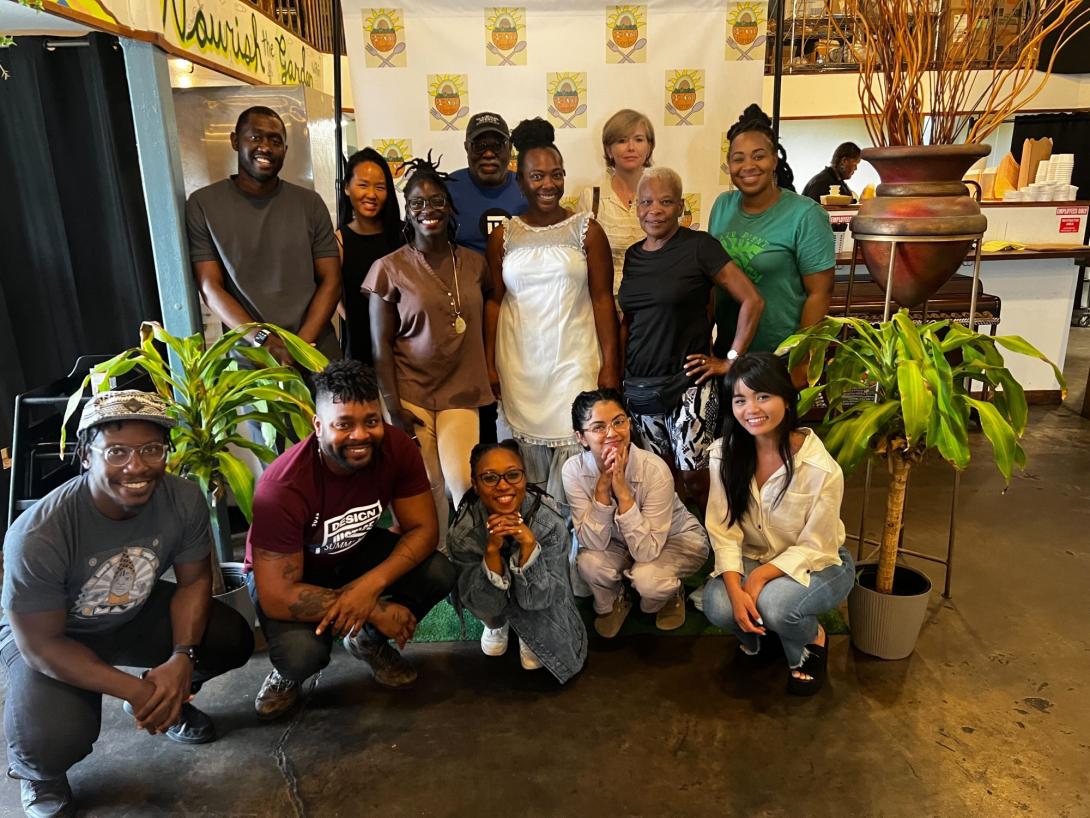The routing of I-10 through New Orleans was one of the signal injustices of the interstate highway era. In the late 1960s, the highway was built atop Claiborne Avenue, a thriving center of culture and commerce in one of the oldest Black neighborhoods in America. The highway destroyed businesses and homes and cast the street, formerly lined with live oak trees, in shadow. Residents have been working to reclaim the space ever since.
This summer, two Master of Architecture students at the Weitzman School spent two months in New Orleans, contributing to the community’s efforts to improve Claiborne Avenue. Supported by the PennPraxis Design Fellows program, Diego Martin and Cheyenne Yamada worked with Colloqate Design, a multidisciplinary firm based in New Orleans and Portland, Ore., on the Claiborne Cultural Innovation District, an ongoing transformation of 19 blocks of Claiborne Avenue. Colloqate, which describes itself as a design justice practice, has been working with residents of the Tremé since 2017 on new visions for the corridor. In 2021, the firm received a $1.75 million grant from the Mellon Foundation to support work on the Cultural Innovation District (CID). It’s aiming to use that grant to transform one or two blocks of Claiborne Avenue by the end of next year.
The project is an exercise in helping the community design its own future, says Natalia Revelo La Rotta, a designer at Colloqate and 2020 Praxis Design Fellow. While there have been periodic efforts to remove the highway altogether, that’s a longer-term movement that involves state and federal authorities, Revelo says. The Claiborne Cultural Innovation District is meant to reclaim the space of Claiborne Avenue for the community in the meantime.
“We can’t do the huge picture, but we can do something small that will at least bring joy,” she says.
“There’s this idea that you can separate community engagement from ‘real architecture,’” Martin says. “What Colloqate is trying to do through the Community Design Organizers program, and a majority of their other initiatives, is that they’re trying to make the architecture and the community engagement so intertwined and embedded that you cannot separate them from one another.”
This story is by Jared Brey. Read more at Weitzman News.








